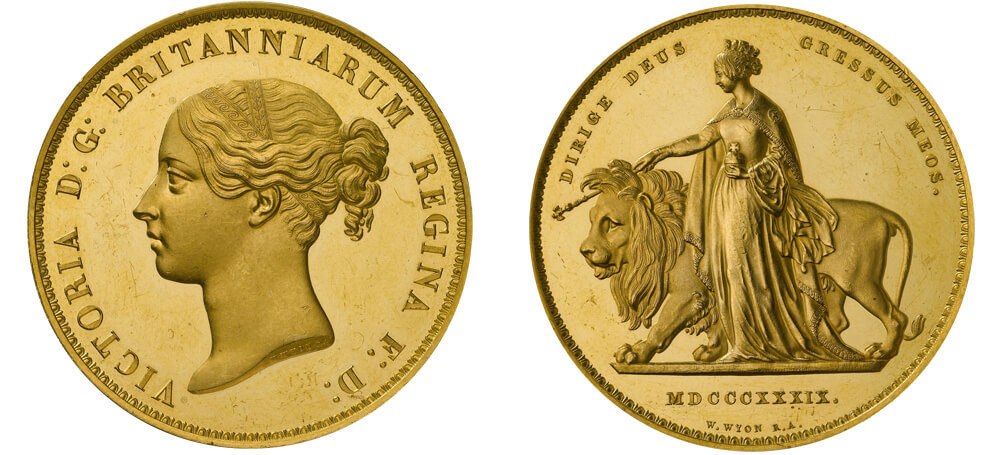Una and the lion five-pound piece
The gold five-pound piece of 1839, though not as spectacularly rare as the Edward VIII pattern coins, is arguably one of the most beautiful coins in the world. On the obverse it shows William Wyon’s famous Young Head portrait of Queen Victoria, considered to be the finest of all Wyon’s portraits of the queen. The reverse is also the work of Wyon and, drawing its theme from Spenser’s Faerie Queene, depicts the queen as Una guiding the British lion. There is a powerful contrast between the restrained energy conveyed by the lion and the peace and grace of the standing figure of Una. The design is an unusual one for a British coin and has given the coin its familiar name of the Una and the lion five-pound piece.

A collector coin
Beautiful though it undoubtedly is, the coin has been criticised for being too medallic. In a sense this is unfair since the Royal Mint records contain no evidence that the Unas were ever to be struck for circulation. On the contrary, all the indications are that they were never intended to be anything other than proof coins and that they were primarily made for inclusion in the specimen sets of the first Victorian coins. These sets, dated 1839, were finally ready for distribution to collectors in 1843, but the Una in fact continued to be struck on occasion long after the sets had been completed.
Varieties and rarity
The total number struck is nevertheless no more than a few hundred. Yet for a rare coin it is surprising how many variations can be found among the surviving pieces. There are different metals, differing types of edge, differing patterns of ornamentation on the queen’s hairbands, and the different reverse reading DIRIGIT in the inscription instead of DIRIGE. It is therefore particularly fortunate that the Royal Mint Museum should contain no fewer than 13 specimens. Two are in gold, four in silver, two in bronzed copper and the remainder, including impressions from the unfinished dies, in tin. Between them they cover most of the varieties which have so far been identified.
